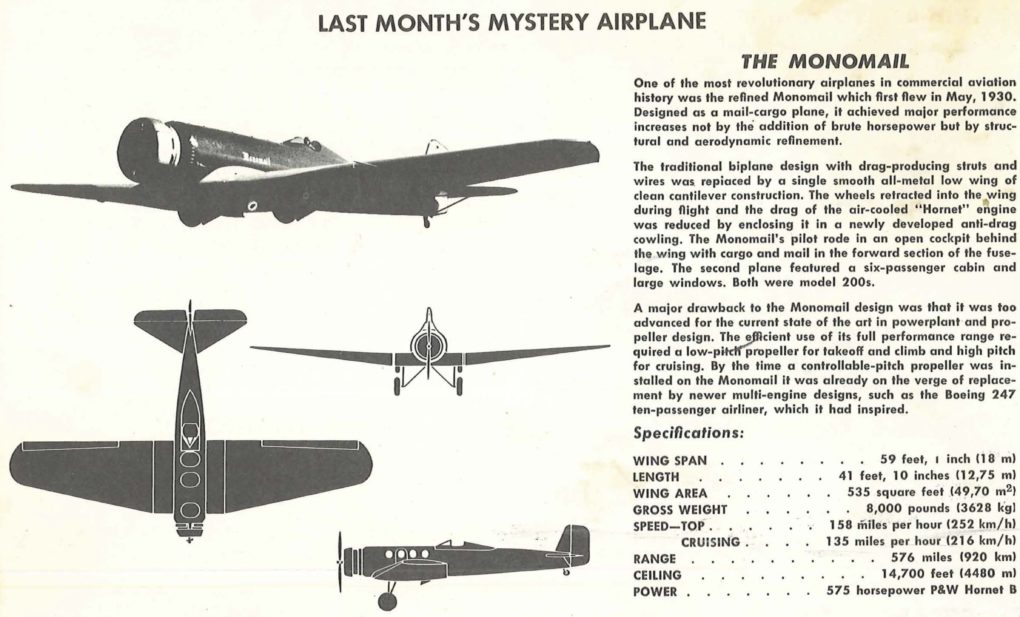This article first appeared in the April 1973 Flight Test News.
Can you name this Mystery Plane?

Last Month’s Mystery Plane

THE MONOMAIL
One of the most revolutionary airplanes in commercial aviation history was the refined Monomail which first flew in May, 1930. Designed as a mail-cargo plane, it achieved major performance increases not by the addition of brute horsepower but by structural and aerodynamic reflnement.
The traditional biplane design with drag-producing struts and wires was replaced by a single smooth all-metal low wing of clean cantilever construction. The wheels retracted into the wing during flight and the drag of the air-cooled “Hornet” engine was reduced by enclosing it in a newly developed anti-drag cowling. The Monomail’s pilot rode in an open cockpit behind the wing with cargo and mail in the forward section of the fuselage. The second plane featured a six-passenger cabin and large windows. Both were model 200s.
A major drawback to the Monomail design was that it was too advanced for the current state of the art in powerplant and propeller design. The efficient use of its full performance range required a low-pitch propeller for takeoff and climb and high pitch for cruising. By the time a controllable-pitch propeller was installed on the Monomail it was already on the verge of replacement by newer multi-engine designs, such as the Boeing 247 ten-passenger airliner, which it had inspired.
Specifications:
WING SPAN: 59 feet, 1 inch (18 m)
LENGTH: 41 feet, 10 inches (12,75 m)
WING AREA: 535 square feet (49,70 sq m)
GROSS WEIGHT: 8,000 pounds (3628 kg)
SPEED-TOP: 158 miles per hour (252 km/h)
SPEED-CRUISING: 135 miles per hour (216 km/h)
RANGE: 576 miles (920 km
CEILING: 14,700 feet (4480 m)
POWER: 575 horsepower P&W Hornet B
This article first appeared in the April 1973 Flight Test News.
One thought on “Mystery Plane”
Comments are closed.